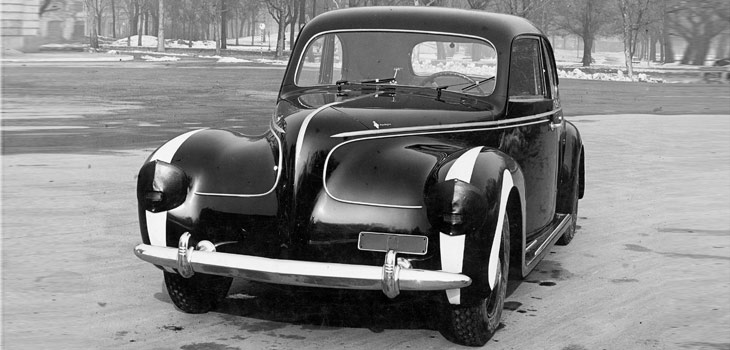The story of Touring Superleggera
The early years In early 1926, two lawyers from Milan – Felice Bianchi Anderloni and Gaetano Ponzoni – decided to leave behind the world…




The Stigler 4EC Berlinetta was a EV from the 40s
The Stigler 4EC Berlinetta by Carrozzeria Touring Milano represents a remarkable yet little-known chapter in automotive history. In 1941, amidst the fuel shortages of World War II, Carrozzeria Touring embarked on the ambitious project of building an electric car to address the pressing need for alternative energy sources. Using the chassis of the Fiat 1100L, this innovative vehicle was commissioned specifically for Count Franco Mazzotti, one of the legendary “Four Musketeers” of the Mille Miglia. The resulting car, named the Stigler 4EC Berlinetta, was a product of necessity, ingenuity, and a testament to the forward-thinking approach of Italian automotive design during the wartime era. Carrozzeria Touring, renowned for its Superleggera (super lightweight) construction method, utilized this technique to ensure the vehicle’s lightness. This was crucial in achieving reasonable performance and range, given the rudimentary battery technology of the time. The lightweight framework was covered with aluminum body panels, significantly reducing the car’s weight and enhancing its efficiency. The Stigler 4EC Berlinetta reached a direct-drive speed of 50 km/h and featured a four-speed gearbox plus reverse, with a range of over 100 km at normal driving speeds. These impressive results were achieved with a modest 4.5 hp electric motor powered by a Tudor battery supplied by the Società Generale Italiana Accumulatori Elettrici in Melzo, Milan. The battery consisted of 27 lightweight, high-capacity lead elements, providing 15 kWh of energy with a total weight of 550 kg. The battery elements were housed in open-top ebonite containers, allowing easy inspection and maintenance. A rectifier supplied by Antonio Gommi of Milan, capable of delivering 3.5 kW of direct current, was installed in the car’s trunk. This allowed the battery to be fully recharged in five hours from any three-phase power outlet with a voltage range of 160 to 275 volts. Typically, recharging took less than five hours since the battery often retained residual capacity, enabling the car to resume operation after only three to four hours of charging, or even less, depending on the need. Beyond its technical prowess, the Stigler 4EC Berlinetta was also a design statement. It featured striking contrast elements, with white-painted fenders set against a black-painted body, an aesthetic choice that doubled as a safety feature. This color scheme improved visibility, a crucial consideration during wartime when road safety was paramount. Despite its groundbreaking nature and the high-profile circumstances of its creation, the Stigler 4EC Berlinetta had a fleeting existence. The car was showcased to Benito Mussolini at Villa Torlonia, highlighting its significance and the high expectations placed upon it. However, as the war continued, the vehicle was lost to history, disappearing into the annals of time. Today, the Stigler 4EC Berlinetta stands as a symbol of wartime innovation, combining advanced engineering with Carrozzeria Touring’s design excellence.




The early years In early 1926, two lawyers from Milan – Felice Bianchi Anderloni and Gaetano Ponzoni – decided to leave behind the world…
Missing or wrong informations?
Carrozzieri-Italiani.com relies on thousend of users who help to populate the database. We do not guarantee the accuracy of the informations. Contact us if you want to contribute.
